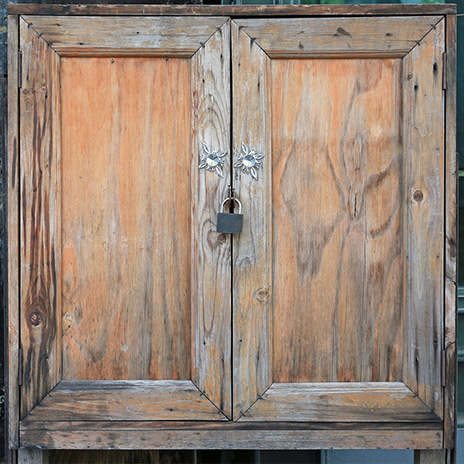Oiling or glazing - what should be considered when treating the interior of a cabinet?
Oiling or glazing - what should be considered when treating the interior of a cabinet?
Glazing or oiling are two methods of treating wood inside a cabinet. To avoid a musty odor, there is a lot to consider.
For reasons of wood protection or aesthetics, also the interior of a wooden cabinet should be treated every now and then. Glazing and oiling offer different benefits, but be careful: A musty odor may occur if the oil is not processed properly.
Glazing in many different colors
In order to give the wooden interior of a cabinet a decorative and easy-to-clean surface, the glazing process is very well suited. The glaze does not penetrate very deeply into the wood and leaves the gaps between the wood fibers largely free. This is important to maintain an open-pored surface in the cabinet: the wood can breathe. This prevents the formation of a musty odor. The walls inside a cabinet are generally less strained and therefore require a less intensive treatment than the wood in a heavily used area. Furthermore, you can use our glazes for your decorative ideas, because there are many colors available, from natural wood tones to more unusual colors such as cornflower blue, blood orange or kiwi, which are mixable among each other.
Oiling the interior of a cabinet
If you desire an effective wood preservation inside the cabinet, then you can use an oil, for example the KUNOS-Natural Oil. During the treatment, however, make sure to apply the oil very sparingly. Afterwards, the cabinet must remain open for at least two weeks in a well ventilated place. This is the only way to get enough light and, above all, enough oxygen circulation to fully harden the oil-resin layer.
Musty smell due to deeply penetrating oil
If using an oil that penetrates deeply into the wood - such as MELDOS N° 264/26 - it is important to pay particular attention to adequate ventilation and adequate exposure to light. In this case, a curing time of at least four weeks can be expected. Closing the cabinet too soon after treatment can produce a very unpleasant musty odor that might not disappear even for decades.
What to do if a musty smell comes up?
Once a rancid or musty odor has formed after oiling, even weeks of airing do not help. The only effective way to solve this problem is to use shellac. Unlike a glaze, the shellac completely seals the wood and no odor molecules can penetrate to the outside. Furthermore, you do not have to be afraid of pollutants, because shellac is made of natural raw materials, which are excreted by a special type of louse. The shellac dries very quickly and it is no longer necessary to ventilate for days.
Photo Credits: © GOLFX - iStock.com


